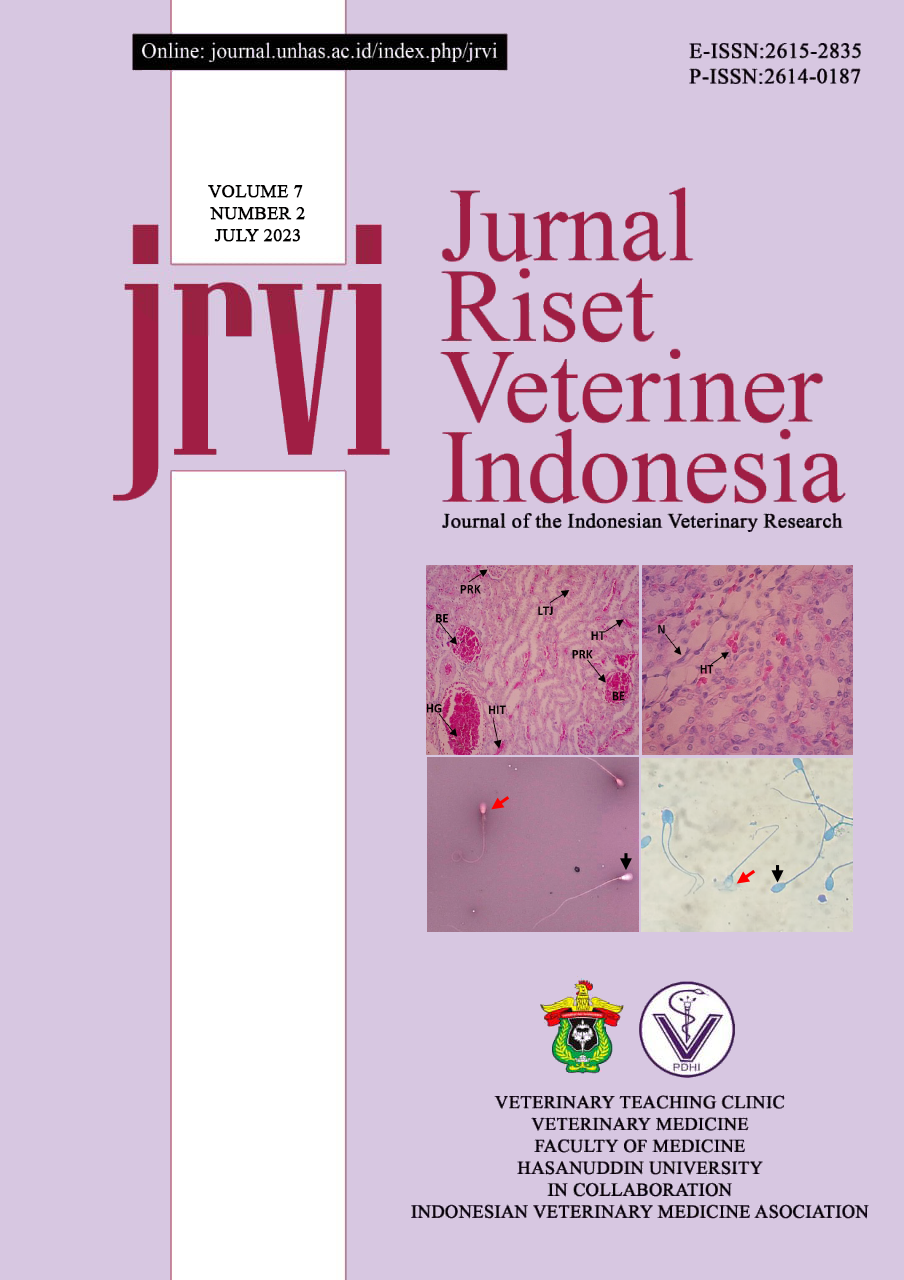Abstract
Avian influenza (AI) is a viral infection caused by the Influenza virus type A. Infection with the Avian Influenza Virus (AIV) has resulted in major financial losses in the cattle industry as well as substantial public health consequences. Indonesia has been dealing with an HPAI H5N1 outbreak since 2003. Despite the implementation of many prevention and control measures, the AIV disease continues to spread. Three Sulawesi isolates were submitted to whole-genome sequencing (WGS) in 2018 using the Illumina next generation sequencing (NGS) technology. The BioEdit 7 molecular analysis application was used to do multiple alignments and amino acid prediction. The Influenza Research Database's Highly Pathogenic H5N1 Clade Classification Tool (https://www.fludb.org) was used for clade analysis. One of the virus's pathogenicity is the amino acid cleavage site in the hemagglutinin (HA) gene. We concluded that the PQRERRRK-GLF amino acid motif was present in the cleavage site of the HA gene in avian AIV isolates from Sulawesi in 2018. This indicates that the AIV virus isolates are pathogenic and highly virulent avian influenza viruses (HPAI). Clade analysis revealed that the AIV isolates were from the H5N1 virus clade 2.3.2.1c.

This work is licensed under a Creative Commons Attribution-NonCommercial 4.0 International License.

